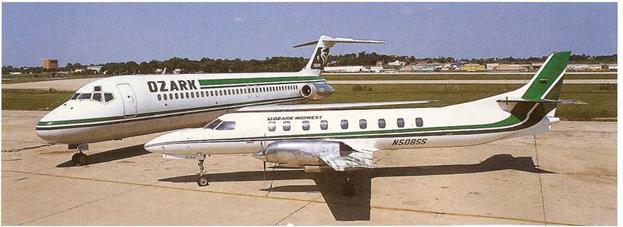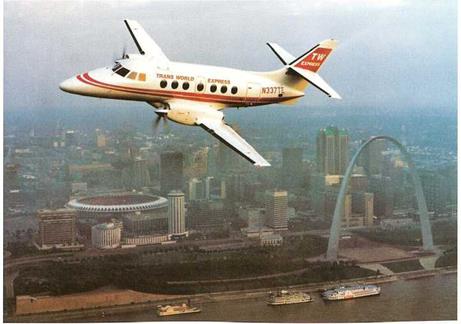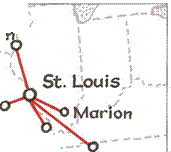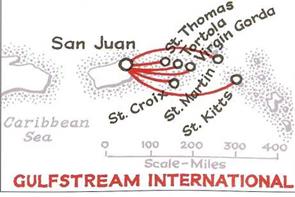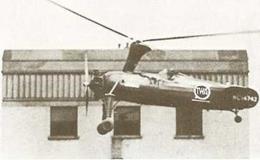Early Air Taxi Links
|
Ozark Enterprise As narrated on pages 82-87, Ozark Airlines, one of the more successful Local Service airlines, had started life as a one-route and almost one-plane operator. It would be classed as a Commuter airline today. It grew steadily through DC-3s, twin turboprops, and short-haul jets. In 1985, it was able to adopt a junior partner, when it made an agreement with Air Midwest, which took over some of the smaller routes, using Swearingen Metros. Ozark itself had been in to the small airplane field when, on 15 March 1972, it used two de Havilland Canada DHC-6 Twin Otters to operate between the Illinois state capital, Springfield, and Chicago’s lakeside airport Meigs Field, next door to the downtown business district. |
|
The Grand Canyon A little-remembered feature of T. W.A. pioneering was its special connection to the Grand Canyon in the summer of 1935. A special arrangement was made whereby passengers on Flights 2 and 3 (Sky Queen and Sky Master, respectively) could transfer at Winslow to the Bach tri-motor planes of Grand Canyon Airlines. The operation was under the supervision of Miss Edith McManus, who was an established local trader in Indian artifacts and products. The round trip Winslow-Grand Canyon fare was $19.00. This must surely have been one of the earliest, if not the first, example of a local interline agreement between a trunk carrier and what today would be termed a commuter airline. So that the clientele would not be too fatigued to enjoy the scenic view and stopover at the Canyon, T. W.A. also offered a no-charge overnight hotel break, including taxi fare to and from the airport, at Kansas City. For a month or two during the summer of 1935, this unusual service appeared in the T. W.A. timetables, but it was not repeated in 1936, as T. W.A. itself stopped at the Canyon when the airstrip was improved; and subsequently, instead of stopping, the DC-2s overflew the Canyon (as close as they dared). The timetables, uniquely, marked this amenity with “OVER” instead of the conventional “arr.” or “dep.” |
|
Short Cut to JFK One such operation was started by a Piper aircraft distributor in Bridgeport, Connecticut, who provided connections to New York’s LaGuardia and JFK airports, thus avoiding a circuitous and sometimes grid-locked road journey via the Whitestone or Throgs Neck bridges. The Piper Twinair service was advertised in the later 1960s as connecting with T. W.A. trans-Atlantic flights. Although not exactly a codesharing operation, such an arrangement seems to have been a harbinger of things to come. |
|
La я Vpnns Grand Canyon veya’3 National Park |
|
I <00 |
|
200__________ . |

|
Dignity and Impudence: an Ozark/Midwest Metro II lines up with a DC-9-30 |
|
Scheduled Air Taxi During the 1960s, when air transport was spreading its wings near and far, the first diminutive airlines that were later to be termed Third Level, and later still Commuter, began to emerge. Not yet dignified by the Civil Aeronautics Board for certification as bona fide airlines, they were able to operate as air taxi services, under Part 135 of the F. A.A. regulations. Under popular pressure from the public, which appreciated the convenience of a non-scheduled air taxi flight that seemed to depart every morning and/or evening at the same time every day, many such services started to operate regularly. |
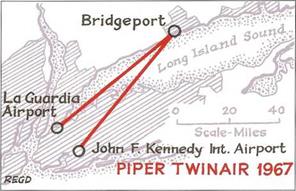

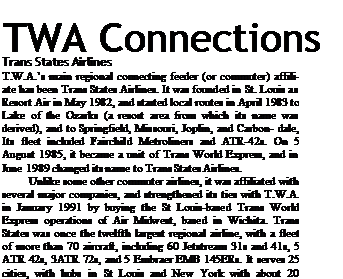 |
||||||||||||
|
||||||||||||
|
||||||||||||
|
||||||||||||
|
||||||||||||
|
||||||||||||
|
||||||||||||
|
||||||||||||
|
||||||||||||
 |
||||||||||||
|
||||||||||||
|
||||||||||||
|
||||||||||||
|
||||||||||||
|
||||||||||||
|
||||||||||||
|
||||||||||||
|
||||||||||||
|
||||||||||||
|
||||||||||||
|
||||||||||||
|
||||||||||||

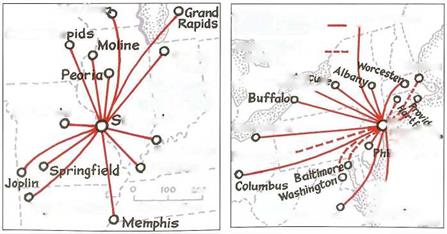

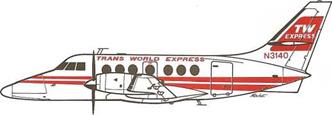
 |
![]()

![]()
![]()

![]()
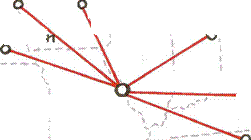
![]()


![]()


BAe Jetstream
19 seats • 300 mph
Early Trans World Express Connections
Several early commuter airlines were connected with T. W.A. Air Midwest, founded by Gary Adamson in Wichita in 1987, had an extensive network throughout the Midwest, and was associated with Ozark Airlines from 1 My 1985. This operation became T. W. A.’s in 1987, when the fleet consisted of Metro IIs, SAAB 340s, and Embraer Brasilias. It was purchased by Trans States Airlines in November 1990 (see page 99).
Jet Express, founded at Atlantic City in 1968, using CASA aircraft, became a T. W.A. connector in February 1989, feeding traffic into New York. Metro Airlines Northeast, a division of the nation’s largest regional carrier at the time, headquartered in South Burlington, Vermont, became a connector in July 1989, feeding traffic to T. W.A. from cities of the Northeast. Most of its routes passed to Trans States Airlines.
Virgin Islands Seaplane Shuttle became a TWE carrier on 1 June 1988 but ceased operationson 17 September 1989, when its fleet was destroyed by Hurricane Hugo.
Gulfstream International Airlines
A former Eastern Airlines captain, Tom Cooper, founded Gulf – stream International in November 1968. He began scheduled services in December 1990 in southern Florida, with Cessna 402s, flying to Haiti and the Bahamas, by which time the fleet had been upgraded to Beech 1900s. Service was expanded during the 1990s, also with Shorts 360s, under agreements with various airlines. Among other ventures, Gulfstream established a hub at San Juan on 1 November 1999, and T. W.A. is one of the beneficiaries of this important Caribbean focal point of several main routes from major cities of the U. S.
Fairchild Metro
19 seats • 320 mph
|
|
|
Burlingto |
Corporate Airlines
This airline was founded by Charles Howell IV in 1996 as Corporate Express Airlines. It started TWE partner service on 16 December 1999, with routes radiating from St. Louis for Trans World Express. Its fleet consists of nine Jetstream 32s.
Chautauqua Airlines
Joel Hall founded Chautauqua Airlines as an Allegheny Commuter on 3 May 1973, based at Jamestown, New York, and serving western New York State and Pennsylvania with Beech 99s, Shorts 330s, and SAAB 340s. It added a southern division at Orlando, Florida, in 1980, and it became a T. W.A. Express connector on 2 April 2000, centred on St. Louis. It is currently adding at least 15 50-seat Embraer EMB 145 s to its TWE fleet.
 |


 The New York Connection
The New York Connection
One of T. W.A.’s feeder affiliates came and went, after a chequered history. It was founded in 1967 by J. Dawson Ran- some in Philadelphia, and with the Volpar Turboliner (an upgraded Beech 18) he built up an excellent commuter network in the northeast, concentrating on feeds into all the New York airports. By 1972, he had become a member of the Allegheny Commuter system, and with a succession of innovations, he built Ransome Airlines into the largest commuter airline in the world. This was achieved by the use of ever – larger aircraft: Twin Otters, Nord 262s, de Havilland Canada Dash Sevens, and finally 48-seat ATR-42s.
Ransome parted company with Allegheny in 1982, flirted with Delta for a year or two, and finally sold his airline to Pan American on 1 June 1986. Pan Am continued to operate services as Pan Am Express to feed into its New York international base, and in June 1989 and May 1990 opened branches in California and Miami, respectively. But “the world’s most experienced airline” was itself in deep trouble, and folded on 4 December 1991.
At midnight on 3 December, Carl Icahn had purchased the operation, which then became Trans World Express (T. W.E.). Carl departed from the T. W.A. scene in 1993, and at a time when belts were tightening, all the T. W.E. landing slots were sold on 6 November 1995, effectively wiping out the former Ransome local commuter empire.
Pan Am Express became T. W.E., Inc., a wholly-owned subsidiary of T. W.A.
|
|
Early Air Mail Experiment
As early as 1938, T. W.A. sought to improve air mail service times. A Kellett autogyro wore its colors during an air mail experiment in connecting service in Chicago.
|
Kellett autogyro, 1938 |
Going To The Fair
In 1964/65 TWA offered direct service from JFK Airport to the New York World’s Fair, through an arrangement with New York Airways, using Sikorsky S-61 helicopters.
Best Connections
During the 1980s, T. W.A. advertised “best connections” with New York Helicopter. International and transcontinental first class and Ambassador Class passengers could travel free between New York aiiports and downtown heliports and East 34th Street or the World Trade Center.
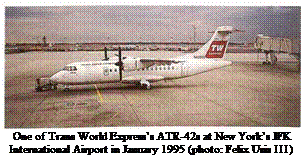 Today, T. W.A. offers many “best connections” to many more places with larger aircraft through its Express Connections throughout the northeastern States, (see also page 99)
Today, T. W.A. offers many “best connections” to many more places with larger aircraft through its Express Connections throughout the northeastern States, (see also page 99)











